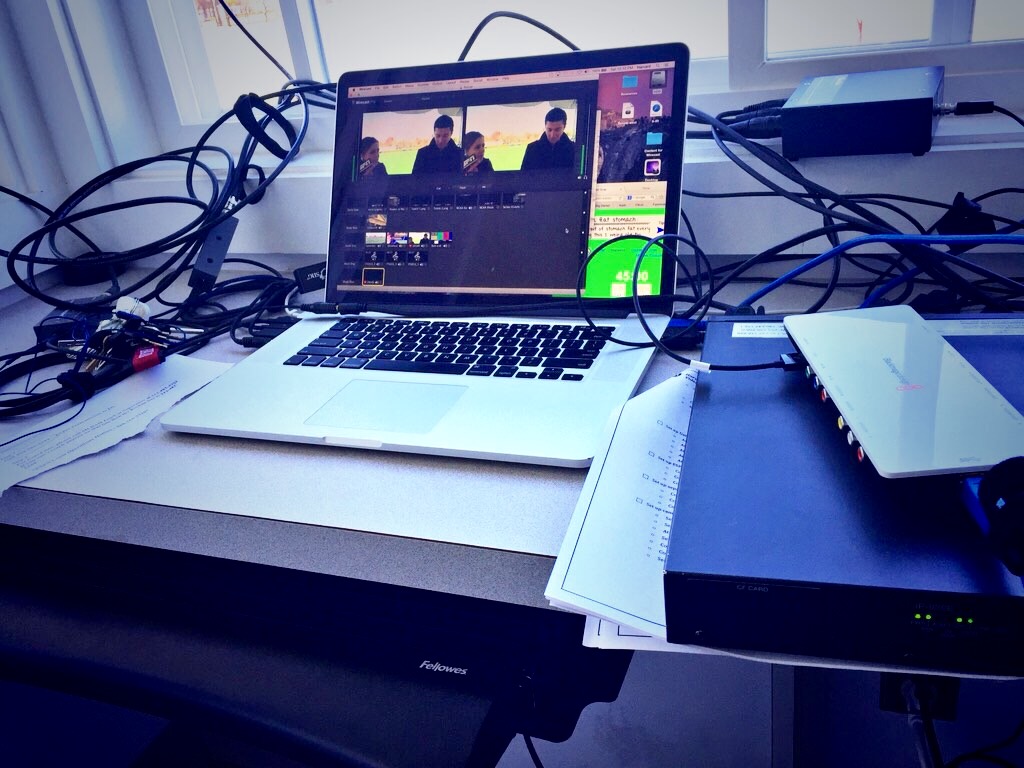From a one-camera stream on a boat, to a multi-camera ESPN3-level telecast How Harvard University uses Wirecast to live stream their sports
By Jim Bask
From Telestream, Written By Imry Halevi
Using every input and output possible – and off to ESPN3The previous two production setups are what we’reused to. Small productions, 1-2 cameras, limited staff,and Wirecast at the helm. It’s what Wirecast is built for,and what we’ve always expected it to do. However, this past November we had to use Wirecast in an unexpected way. Our women’s soccer team won the Ivy League conference title, and was selected to host a first round game in the NCAA tournament. We received a phone call from ESPN, asking that we produce a broadcast ofthe game for ESPN3, as we do for some football,hockey and basketball productions. Unfortunately, our control room was already busy that day for a scheduled hockey game, so we were stuck. Instead of getting back to ESPN3 with an unfortunate rejection, we decided to pull off the largest and best-produced broadcast we could…all using Wirecast on a laptop. The basic setupincluded three cameras connected to the laptop. In addition, we added three major things to make our production more professional, and better suited to
ESPN standards:

1. Graphics – We created custom graphics in Wirecast specific to this NCAA game. From score bug, to intrographic, to side panels, to lower thirds – having branded graphics made a big difference, and differentiated our broadcast from any “typical” web stream out there.
2. Program Open – As typical, we had two commentators call the game. However, in our effort to “look more professional,” we decided to pre-tape a complex open, as we do with our larger shows. We started with exterior establishing shots we recorded ahead of time (with an underscore of intro music), then we put the commentators on camera with lighting and stand-up stick mics. Finally, we alternated between our other cameras, each with a gamerelevant graphic (such as head-to-head stats, players to watch, bracket, etc.). As expected, the first couple of tries didn’t go so well, so we practiced the open over and over again. Eventually we got it right, and were able to use that recording to start our Wirecast show, and then transition to live cameras once the game began. This professional opening to thebroadcast made a big difference, and set the tone for the overall show.
3. Output – When we typically use Wirecast, we out put our production in two different ways – a MP4 recording to an external hard drive for archive purposes, and a RTMP stream to the Ivy League Digital Network. However, neither of those was relevant to ESPN. They wanted us to transmit the production to Bristol, CT using a special HD-over-IP encoder they provided (which takes the place of a standard satellite uplink truck, or dedicated Vyvx fiber). We had never done anything like that before using Wirecast. The encoder had many differentinputs options, and we spent a considerable amount of time with ESPN Transmission trying to figure outwhat we could do. We really wanted to use a Blackmagic Mini Monitor to get a HD-SDI output from Wirecast into the encoder. However, all ourThunderbolt ports were already in use. Our next choice was the built-in HDMI out of the laptop. That worked well, but for some reason the encoder did not receive embedded audio within the HDMI feed. Therefore, we also had to take analog audio from the laptop (using a 3.5mm TRS to DB9 cable) and bring that into the encoder. All-in-all, not the simplest of solutions, but it did provide crystal clear video and clean audio, without taxing the laptop too much. We were very excited to see that Telestream had released Wirecast 6.0 shortly before this production.
The upgraded 64-bit version allowed us to use all inputs and outputs on the laptop with low to moderate CPU usage. We were also able to try out Wirecast’s new replay feature, which we plan on incorporating into more of our productions in the future.

